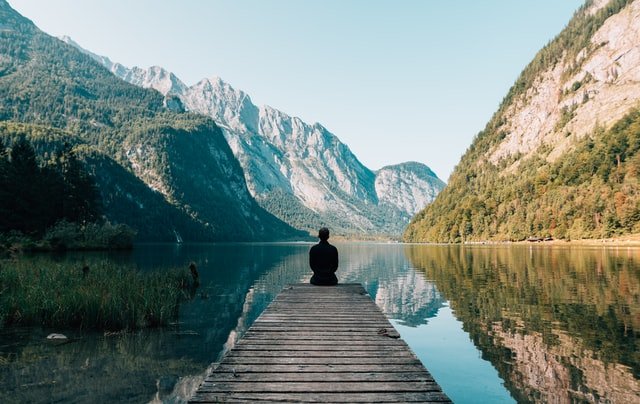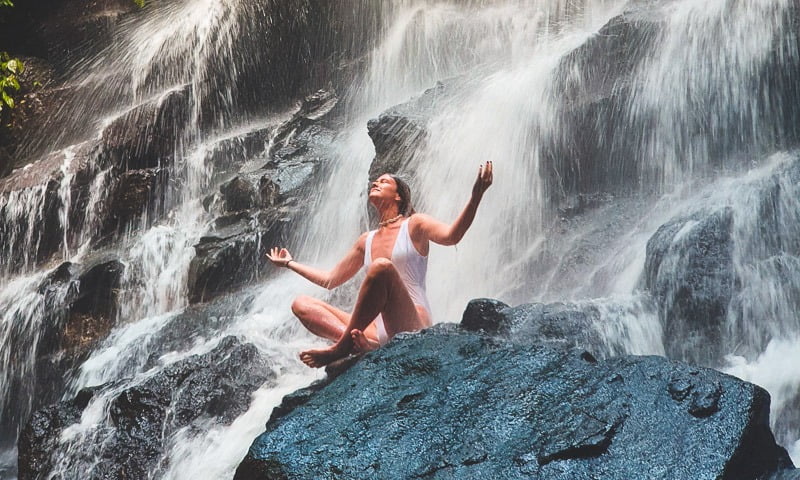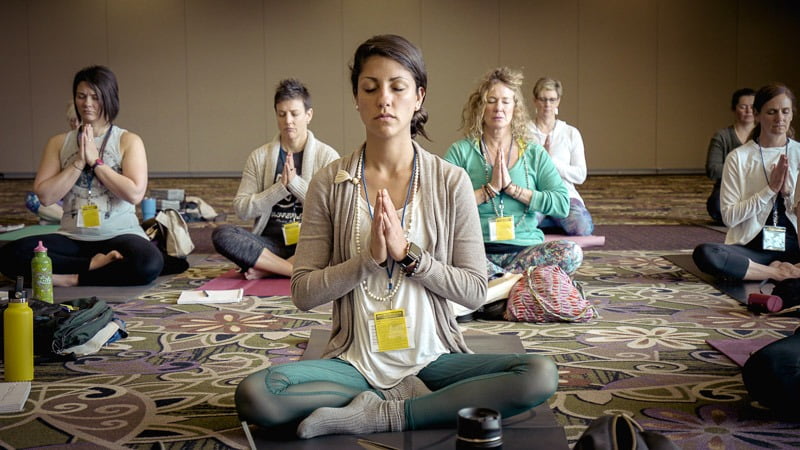When we talk about meditation, we immediately imagine someone sitting cross-legged, hands in prayer and eyes closed. Yes, it’s possible to meditate in this position, but it’s not compulsory! There are many ways to meditate, and it doesn’t just help you relax… It’s a practice that can simply change your life for the better. We hope our little article on meditation will help you learn more about the subject, and perhaps even inspire you to try it out or take your practice further.

By the way, what exactly is meditation?
Today, meditation could be equated with non-thinking. Until the early 15th century, “meditation” was understood to mean reflection on a religious mystery. But did you know that this word actually has its roots in the Latin word medeor, meaning to care? Over time, the definition of this word has lost some of its meaning in spoken language. However, it’s by practicing meditation that we understand its true meaning. There are many types of meditation, all of which place consciousness at the heart of our being.
The first written records of meditation practices date back to 500 BC. Yet frescoes depicting people in meditative positions have been found in Indian caves. It’s hard to date the emergence of this practice, but one thing’s for sure: it’s ancient. It can be found in many faiths and movements, notably in Buddhism through Buddha and in Hinduism through the Yoga Sutras.
Why meditate?
Meditation is an increasingly widespread practice. It is now detached from any notion of religion, unlike before. Today, millions of people practice it regularly, even daily. And not for nothing: as you know, meditation helps you relax, but not only that! This practice has a number of effects:
- improved concentration, attention and memory
Through meditation, we learn to consciously observe what we do, what we think and what’s going on around us.
- prevention of cardiovascular disorders
Meditation has positive effects on blood pressure, insulin resistance and glucose tolerance. Meditation reduces the risk of developing metabolic syndrome.

- reduced intensity of obsessive-compulsive disorder
By practicing meditation regularly, people with obsessive-compulsive disorder find it easier to let go of their obsessive thoughts.
- increased positive feelings
During meditation, the left prefrontal cortex is activated. Just like when we experience positive feelings like enthusiasm and joy. People who meditate regularly tend to experience positive feelings more often on a daily basis, and are therefore happier.
- reducing chronic pain symptoms in the elderly
Recommended for the elderly (but young people too!), meditation accompanies and reinforces any therapy aimed at reducing chronic pain.
- stress and anxiety reduction
Stress is actually caused by negative thoughts. When we meditate, we improve cortisol secretion and drive out all those harmful “noises” that give us anxiety. Daily meditation is one of the best stress relievers.
The different meditation techniques
The art of meditation can be practiced in many different ways. Not everyone will like all of them, so you have to find the ones that suit you best. Here’s a selection of eight types of meditation to practice without moderation.
Guided meditation : This type of meditation is very popular with beginners. It consists of listening to a voice guiding you towards relaxation and refocusing of your body and mind.
Mindfulness meditation: observing the present moment without judgment. We can focus our attention on noises, scents, the people around us, as we walk, and so on. By paying attention to the present moment, we can also observe emotions linked to the environment.

Visualization meditation: during this type of meditation, we try to depict something or someone in our thoughts as accurately as possible, and observe this image. The aim is to feel and observe the emotions and physical sensations associated with this image.
Vipassana meditation : the idea is to find the true nature of reality by observing our own existence. Every moment and every thought is the object of meditation, with the intention of eventual transformation. When an emotion or thought arises, we welcome it, always without judgment, and continue the breathing movement.
Mantra meditation: This involves repeating, aloud or in our thoughts, a word or mantra (a set of sacred words) throughout the meditation.
Meditation in movement: This can be yoga, Qi Gong, Tai Chi or simply walking. While in motion, we observe the flow of energy within us.
Sound meditation: Singing (Tibetan) bowls, gongs and other instruments are used to create sounds for concentration and relaxation. It is, in fact, the vibrations of these sounds that lead to this meditative state.
Zazen meditation: This Japanese practice involves observing any thoughts or emotions that may arise, welcoming them without judgment and letting them go. For this meditation, we sit facing a wall. The idea is to face up to ourselves.
How to meditate easily?
The most important thing when meditating is to feel at ease, in a comfortable position and in a calm environment. You can practice standing up, sitting down, dancing, with your eyes closed or looking at something, etc.

Anything is possible, as long as you set a sincere intention to practice meditation. The first attempts may be relatively difficult, but a real meditative state is usually reached after a few sessions. To start small, here are a few instructions:
- Choose a quiet place where you won’t be disturbed.
- Try to meditate daily for a short time, say 10 minutes.
- Dress so you don’t feel cold. In an immobile position, the body tends to cool down rapidly.
- Find a comfortable position with a straight spine. In lotus position, cross-legged or on your heels, relax your shoulders, letting them move backwards. Tilt your chin slightly towards your chest, as this is the position in which you can breathe most freely.
- Be an observer of your thoughts, letting them come and go, without dwelling on them.
- Be aware of your breathing, it’s what allows you to be in the present moment.
- And above all: be easy on yourself!
The art of meditation is now practiced all over the world and in all kinds of establishments. Many of the hotels we recommend offer meditation sessions, and for all levels of experience. Sometimes all it takes is one guided session to really appreciate this practice more deeply. In fact, it’s often after meditating in nature or on specially-designed paths (such as the Dolder Grand in Zurich) that we want to establish a daily meditation routine.
Our favorite meditation hotels include Bhutan Spirit Sanctuary in Bhutan, Emerito in Italy and Vana Retreat in India.
Book
Benefit from our expertise in wellness stays and contact us for a personalized quote for a special meditation stay in an exceptional establishment.
Call us on + 33 1 85 73 22 14 or on +41 22 501 75 16







